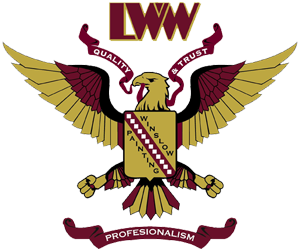When it comes to finding the right color scheme for painting the interior and exterior of your home, the possibilities are truly endless. Colors, hues, and tones create so many options to incorporate your own style, choice of interior design, as well as the accessories and furnishings. Despite having so many having advantages modernly speaking, people were limited to the paints of early days. Paint was frequently applied to stone and other surfaces in an effort to brighten up living spaces of the early humans as far back 40 thousand years ago, although it was limited to fewer house paint color options. In the beginning years of painting, the paints were comprised of organic byproducts such as blood and fatty oils from animals combined with other such ingredients that include tree sap, colored clap, and soot. L.W. Winslow Painting, Inc would like to briefly relate a little history concerning house painting today.
History of Painting Timeline
From 1200s – 1500s: Across the progression of time, craftsmen have been commissioned to paint people’s homes. There are indications that suggest the house painting was a trade in the early years of the 11th century. Since the early 1200s, professionals have been hard at work, painting houses. By 14th century England, house painter guilds were getting popular. As a respected profession, these guilds established the field and set specific standards for house painting. The guild members hoarded their painting skill secrets and their mixing techniques for creating the desired house paint color to protect their livelihood.
Colonial America: Pilgrims avoided house painting in early colonial America because many saw it as a demonstration of arrogance, wealth and vanity. In fact a preacher of Charlestown faced the criminal charge of sacrilege in 1630 for painting the interior of his home! Nonetheless, demands continued to grow. The base of paint during this era was oil and water, which was then mixed with a plethora of ingredients.
More common was lead, iron, copper, berries, fruit, and other such ingredients that concocted a variety of painting colors. This provided homeowners with many color options and the paints needed for walls, ceilings and cornices. The tools of the trade were wooden brushes designed with a variety of hairs. The application of paint was a little challenging because of the thickness of the paint.
From 1700s – 1880s: Marshall Smith’s “Machine for the Grinding of Colors” in 1718 fueled the search for the best method of grinding pigment materials effectively and manufacturing paint in a mill. The first company to produce ready-to-use paint with the now familiar re-sealable tin can was in 1866 but prior in the mid 1800s, linseed oil became the preferred binding agent because it cost less and protected the painted wood.
20th Century: To improve the mixing of paint throughout the 1900s was a paint company that invested significant resources into research and development of chemicals designed. The computer based color-matching system was designed in 1982 and it would prove to be an indispensable tool for house paint color selection.
Painting & More in Amagansett, Bridgehampton, East Hampton, Hampton Bays, Montauk, North Haven, North Sea, Noyack, Quogue, Shelter Island, Sag Harbor, Sagaponack, Shinnecock Hills, Southampton, Springs, Wainscott, Watermill, Westhampton, West Hampton Beach, New York
These days, artisans have a variety of techniques and methods, tools and equipment as well as an assortment of features in the many colors of paint. Though some homeowners try to perform the interior and exterior paint on their own, nothing compares to the crisp edges, full coverage, and smooth results of professional painting projects provided by L.W. Winslow Painting, Inc. Contact us today!

